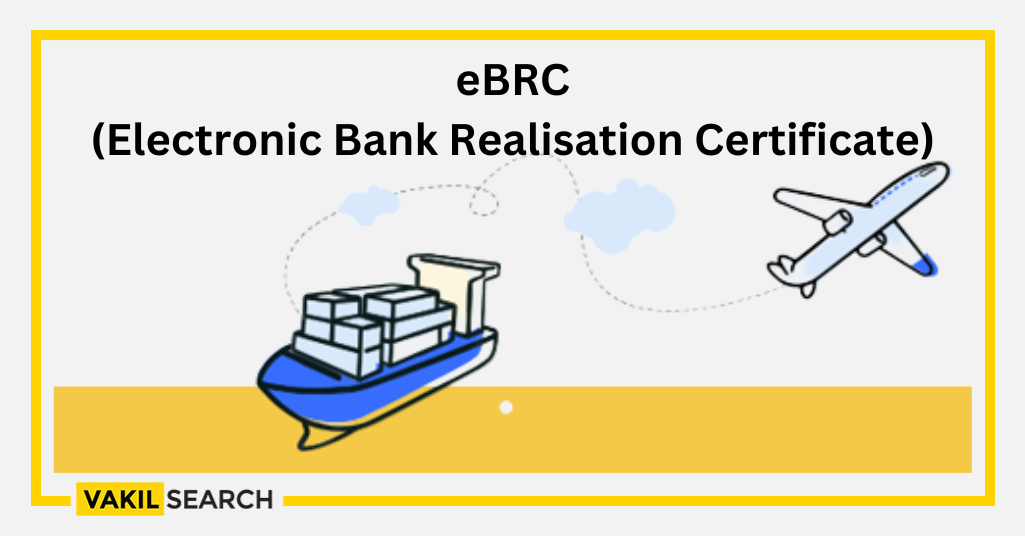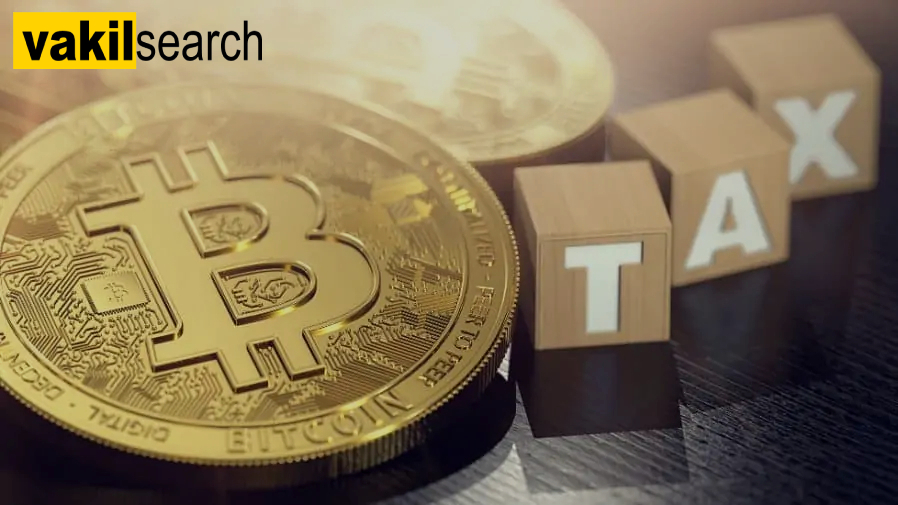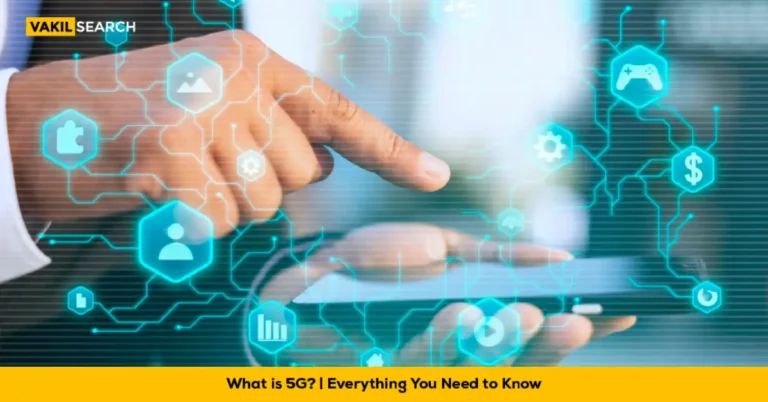This informative post will educate you about the ins and outs of the Electronic Bank Realisation Certificate (eBRC). Dive in to learn more about the same
Overview of EBRC
An Electronic Bank Realisation Certificate (eBRC) is a critical digital certificate for individuals in the export sector. It is provided by a bank as proof that the exporter has received money from the importer for items exported. Exporters must report the value of the products they intend to export.
When all payments for a shipping bill have been received, an exporter may request that their bank cancel the item in the EDPMS (Export Data Processing and Monitoring System) and issue an eBRC. Any firm seeking advantages under the Foreign Trade Policy must provide a valid BRC as evidence of payment for shipments made.
Why do you need an Electronic Bank Realisation Certificate as an exporter? This article will not only address this question but also lead you through the process and your involvement in it.
Purpose of EBRC (Electronic Bank Realisation Certificate)
In a nutshell, an Electronic Bank Realisation Certificate is evidence of export. To properly comprehend it, however, one must first comprehend its purpose.
Well, an exporter must have an eBRC to take advantage of the numerous export incentives (subsidies, duty exemptions, low-cost loans, and so on) provided by the government as part of its FTP (Foreign Trade Policy). The DGFT (Directorate General of Foreign Trade) in India formulates and implements the Foreign Trade Policy and many of the export incentives it promotes.
The Directorate General of Foreign Trade also uses the BRC technology, which permits banks to electronically input every foreign exchange realisation-related information relating to exports to the DGFT server. This data is sent via a digital certificate known as Electronic Bank Realisation Certificate.
Prior to the introduction of the DGFT’s eBRC platform in 2012, the procedure was totally manual. The exporter had to go to their bank and seek an Electronic BRC (Bank Realisation Certificate), which was supplied in tangible form by the bank. The BRC was then submitted to the DGFT regional authority by the exporter.
The BRC information was manually input into a DGFT programme. This made application for export incentives time-consuming and inconvenient. The Electronic Bank Realisation Certificate eliminated the necessity for a physical BRC as well as the exporter’s visit to the DGFT authority or bank.
Importance of Electronic Bank Realisation Certificate:
The Directorate General of Foreign Trade’s (DGFT) Electronic Bank Realisation Certificate initiative aims to digitize and systematically record foreign trade transactions.
- An electronic-facilitated document known as an eBRC is used by an exporter to demonstrate payment receipt for an international trade transaction.
- As previously stated, eBRC is an essential source of economic indicators and financial data.
- In simple terms, an Electronic Bank Realization Certificate (e BRC) is proof of export for any company applying for benefits under the Foreign Trade Policy.
- This certificate serves as proof that a company has realized payment for exports.
Electronic Bank Realisation Certificate Details:
Electronic Bank Realisation Certificate (e BRC) is a digital certificate issued by the Reserve Bank of India (RBI) to exporters in India. The eBRC is issued to validate that an exporter has received payment for their goods or services exported from India, and to ensure that the foreign exchange earnings of the exporter have been repatriated back into India.
The eBRC was introduced by the RBI in 2011 to facilitate the verification of foreign exchange transactions by exporters. Before the introduction of Electronic BRC, exporters had to manually submit documents to various authorities to claim benefits under different export promotion schemes. The process was time-consuming and cumbersome, which resulted in delays in the release of benefits to the exporters.

With the introduction of eBRC, the verification of foreign exchange transactions has become faster and more efficient. The BRC is generated by the RBI’s Foreign Exchange Department (FED) based on the information received from authorized dealer banks. The Electronic BRC contains details such as the name and address of the exporter, the name of the foreign buyer, the invoice amount, the date of export, and the date of realization of export proceeds.
Exporters can access their eBRC online through the DGFT (Directorate General of Foreign Trade) website using their Import Export Code (IEC) and other relevant details. The Electronic Bank Realisation Certificate is used by exporters as proof of realization of export proceeds and to claim various export benefits such as Duty Drawback, Merchandise Exports from India Scheme (MEIS), and Service Exports from India Scheme (SEIS), among others.
What’s the Use of It for an Exporter?
As previously stated, with eBRC, there is now less human interaction and lower transaction costs for giving export advantages to exporters. DGFT currently receives information for shipping bills electronically via EDI ports; with new integration with banks, it now receives foreign currency realization details as well, which can be connected to each shipping bill.
The information from the shipping bill (FOB value of items exported) and the eBRC (Final payment received against export) are linked so that the value at which the exporter would receive the incentive may be validated.
In the case of EDI Shipping Bills, an exporter just has to link the applicable shipping bill and eBRC when submitting for an incentive online. There is no need to send paper copies to DGFT for the same.
Electronic Bank Realisation Certificate(eBRC): How Does It Work?
The eBRC process is depicted in the following flow chart:
- When export revenues are realized, the bank creates an e-BRC
- It then generates a digital XML file with Electronic Bank Realisation Certificate information
- The bank uses a digital signer given by the DGFT or built by itself to sign the XML file
- The bank then sends the XML file to the DGFT server. It accomplishes this by visiting the DGFT website, logging into the e-BRC application, and selecting the “Upload eBRC” option
- The DGFT server checks the user and validates the data when the file is submitted. Following that, it notifies the bank that the file’s been successfully uploaded
- After uploading the file, the exporter may instantly check the progress of their Electronic Bank Realisation Certificate on the DGFT portal.
How Exporters May Check the Status of Their Electronic Bank Realisation Certificate Status?
To check the status of their eBRC, an exporter must take a few easy steps:
- Navigate to the official website of DGFT and click on the “View and Print Your eBRC” section which you’ll find under the “Services-eBRC” tab
- The exporter will then be sent to a page labelled “eBRC Trade Details”
- Here, the exporter must provide the IFSC Code and IEC Code of their bank
- They must then select “Show Details”
- Every electronic bank realisation certificate uploaded by the financial institution will be shown to you
- Exporters can simply tap on the “Print” button on individual eBRCs.
Claiming Incentives for Exports Leveraging eBRC
- A shipping bill is created electronically in India using the Indian Customs Electronic Data Interchange Platform (ICEGATE). It electronically and automatically shares the information on a shipping bill with the Directorate General of Foreign Trade. To claim export incentives, an exporter should link relevant shipping invoices with eBRC
- While an exporter claims an export incentive via a Directorate General of Foreign Trade scheme, the value of the incentive is determined by the DGFT. For this purpose, DGFT compares the FOB value of the items exported as stated in the shipping invoice to the entire realised value against export as stated in the electronic bank realisation certificate
- When filing for an export incentive, the exporter must guarantee that the bank reports the electronic bank realisation certificate value and that it displays the whole realised value. If the eBRC number is smaller, the bank should make the necessary adjustments.
Some Critical Points Associated with eBRC and Filling Incentives for Exporters
- The value of export taken into account for incentive computation is either the realised value according to eBRC or the FOB value according to the Shipping Bill, whichever is smaller
- An exporter must submit the Commission, Insurance, as well as Freight data when applying under any scheme because eBRC doesn’t collect this information
- Exporters must double-check the realised value recorded by the bank on e brc, and if there’s an error, the bank must amend it
- If a shipping bill contains numerous items, the realised value or FOB value (whichever is smaller) is proportionately allocated across all products using a multiplication factor
- The multiplication factor is basically the ratio of the realised value to the FOB value as stated on the shipping bill
M (Multiplication Factor) = FOB Value according to eBRC / FOB Value according to the Shipping Bill
- The commission charged by the bank must not be subtracted from the realised value stated in e brc.
What To Do If Your e BRC Has an Error?
An eBRC that has been successfully uploaded to the DGFT system cannot be changed. When monitoring the status of your electronic bank realisation certificate, if you detect an issue, you should contact your bank to get it corrected. The procedure is as follows:
- The financial institution (bank) will check the eBRC status
- If the status isn’t “utilised” or “used”, the bank will call off the e brc by simply uploading it with status “C’ to the DGFT system (whether C stands for Cancel)
- The bank will issue a new eBRC with a new Electronic Bank Realisation Certificate number when the DGFT system has updated the cancellation status
- It’ll upload the new e brc file with the status”F” to the DGFT system (where F stands for Fresh).
Conclusion
So, this was all an exporter needed to know about the Electronic Bank Realisation System. In addition to assisting exporters in claiming export incentives under the FTP and GST refunds on service exports, an electronic bank realisation certificate is a significant source of financial information as well as an economic indicator. If you want to learn more or have certain questions regarding eBRC, you can reach out to the seasoned legal experts of Vakilsearch and get your queries resolved in minutes.
FAQs of eBRC
How do I get an e-BRC certificate?
You can obtain an e-BRC (Electronic Bank Realisation Certificate) certificate by submitting the required export documents and relevant information to the authorised banks designated by the Reserve Bank of India (RBI). The banks will verify the export transaction details and issue the e-BRC certificate to the exporter electronically.
What is eBRC?
eBRC stands for Electronic Bank Realisation Certificate. It is a digital certificate issued by authorised banks in India that reflects the receipt of payment in foreign currency against exports made by an Indian exporter.
What is the time limit for Ebrc?
The authorised banks must issue the e-BRC certificate within two working days from receipt of the relevant documents and information.
What is eBRC for deemed export?
In the context of e-BRC, deemed exports refer to transactions where goods supplied do not leave the country but are deemed to have been exported. In such cases, the designated agencies, such as the National Small Industries Corporation (NSIC), issue the e-BRC certificate to the supplier
What is eBRC in DGFT?
The Directorate General of Foreign Trade (DGFT) is responsible for implementing and regulating India's foreign trade policies. e-BRC is an integral part of DGFT's electronic data interchange (EDI) system that enables the digital issuance of Bank Realisation Certificates for exports. The DGFT uses e-BRC data to monitor and analyse India's export performance and formulate trade policy accordingly.
Why is an eBRC important for exporters?
An eBRC (Electronic Bank Realization Certificate) is crucial for exporters as it serves as proof of receipt of payment for exported goods or services, facilitating foreign exchange transactions and compliance with regulatory requirements.
Who needs an eBRC?
Exporters engaging in foreign trade transactions require an eBRC to validate the receipt of payment for exported goods or services.
Can an eBRC be cancelled or amended?
Yes, under certain circumstances, an eBRC can be cancelled or amended by the authorized bank or the exporter, subject to compliance with relevant regulations and procedures.
What is the purpose of eBRC?
The primary purpose of an eBRC is to authenticate the receipt of export proceeds in foreign currency, providing essential documentation for trade transactions and regulatory compliance.
What is the full form of eBRC in banking?
The full form of eBRC in banking is Electronic Bank Realization Certificate.
What is the difference between eBRC and FIRC?
An eBRC is issued by banks to confirm the receipt of export proceeds in foreign currency, whereas an FIRC (Foreign Inward Remittance Certificate) is issued by banks to acknowledge the receipt of inward remittances from abroad, including payments for exports.










